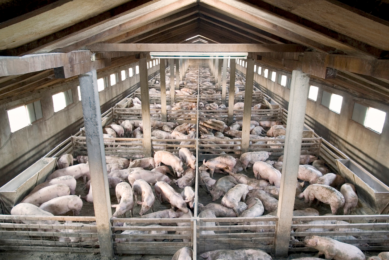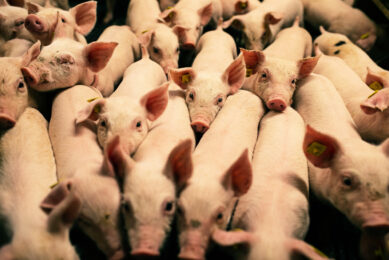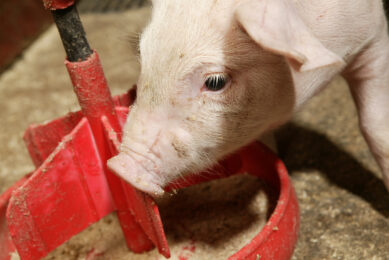Live yeast for sows drives more successful weaning
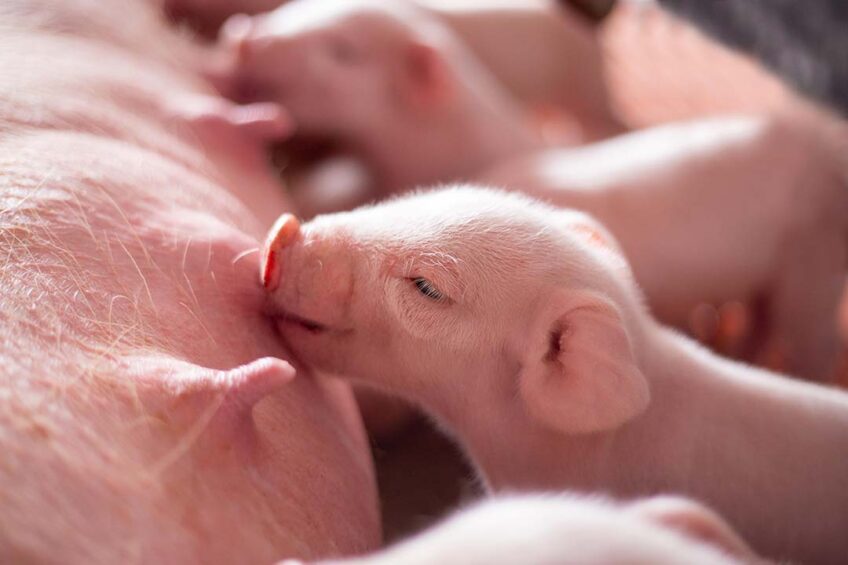
Producing robust and heavy pigs starts early, and largely depends on the sow’s health, microbiome and nutrient status. Meta-analysis shows that adding live yeast to the sow’s diet improves weight and liveability at the time of weaning.
PIG HEALTH SPECIAL 2024 – read all articles
Weaning weight might be one of the most important parameters on a pig farm, as it is strongly correlated with growth levels during fattening, overall health status and feed efficiency. At the same time, we are dealing with a reduction in average birth weight and more variation within litters, due to genetic selection for hyperproflic sows over the last decades. Several feeding and management strategies are needed and used to improve the health and performance of suckling piglets. And this starts with taking care of the sow. One of the successful interventions is the application of live yeast in the sow’s diet. This has a direct positive impact on colostrum and milk quality, nutrient transfer and microbiota modulation.
Better colostrum and milk
The composition and yield of colostrum largely determines how they develop after birth, before they move to regular milk for the rest of the weaning period. Colostrum is very rich in nutrients, immunoglobulins (mainly IgG), immune cells, and lactoferrin. It plays an essential role in pig survival and growth, and with that – it can be considered the earliest prevention for neonatal diarrhoea. However, colostrum production is one of the most challenging aspects for high-producing breeds, as colostrum production does not increase per se with litter size. This increases the risk that not every piglet gets the nutrients and immunological protection it needs. Feed supplementation with live yeast Saccharomyces cerevisiae Sc47 (hereafter called ‘live yeast’) during late gestation and lactation has been shown to positive influence the immune status of the sow, leading to an increased concentration of IgG in the colostrum, and higher IgG level in the blood of piglets (measured 24h after birth). IgA levels can also be increased in colostrum and milk. This so-called naturally acquired passive immunity (from sow to piglet) helps reduce the incidence of diarrhoea and improves piglet survival during the suckling phase. Live yeast in sow’s diet also improves the nutritional quality of milk by increasing protein, fat, and dry matter content, direct helping the piglet’s high nutritional needs.
Sow microbiome is key
The sow’s microbiota is important for her own health and nutritional status. Only with a healthy gut, the sow can properly develop mammary glands, feed the unborn piglets, and produce good colostrum and milk when the piglets have arrived. This requires an adapted feed management during gestation and lactation, but also during the critical period of transition. This can be done by introducing more feeding intervals during the day or providing a transition feed to help the microbiota adapt to a diet with less fibre and more energy. In practice, this is not always applied correctly, which can lead to gut dysbiosis. This in turn can lead to constipation, a condition associated with increased stillbirth, lower piglet vitality, and longer parturition. Colostrum intake could then be altered. Besides the increased farrowing supervision needed, the sows are also prone to develop post-partum dysgalactia syndrome which impairs colostrum and milk production, especially within 12 to 48 hours post-partum. The result is higher piglet mortality. Live yeast supplementation for sows has been shown to reduce constipation before farrowing, thus contributing to give a good start to piglets.
Transferring the good bacteria
Having a healthy microbiota development in the sow is also important for the development of the microbiome of her offspring. And this process already starts during birth, when the piglets get in contact with the sow’s vaginal and faecal microbiota. After birth, colonisation continues. Some bacteria present in the sow’s gut microbiota can even be transferred to the offspring through colostrum and milk. This is because some bacteria can translocate from the gut into the mammary glands. This provides great opportunity to positively modulate the piglet’s microbiota via the sow, at a very early stage. Providing sows with live yeast in their diet has been shown to promote the establishment of a healthy microbiota with more beneficial bacteria and less pathogenic strains. Beneficial bacteria include the ones that produce short-chain fatty acids, known for a variety of health benefits. This microbiota modulation in piglets improves performance during the suckling period, and possibly beyond. With a well-developed gut, the piglets are equipped with a robust intestinal immune system and efficient nutrient absorption capacity, which is the basis for a successful full production period.
More and heavier piglets weaned per litter
A meta-analysis (combining 8 studies) was performed to confirm the benefits of live yeast supplementation in sow. The trials were performed between 2012 and 2023 and involved more than 3,000 weaned litters. The data was collected from multiple geographies, various management, and environmental conditions, and a variety of genetic sources of pigs and feed formulas. The meta-analysis showed that when live yeast was given to sows during the last month of gestation and during lactation led to an increase of 0.3 piglets weaned/litter. The live yeast supplementation also led to 230 gr higher individual bodyweight and 4.16 kg heavier litters at weaning (Figure 1).
Figure 1 – Effect of live yeast supplementation during late pregnancy and lactation on sow reproductive performance.
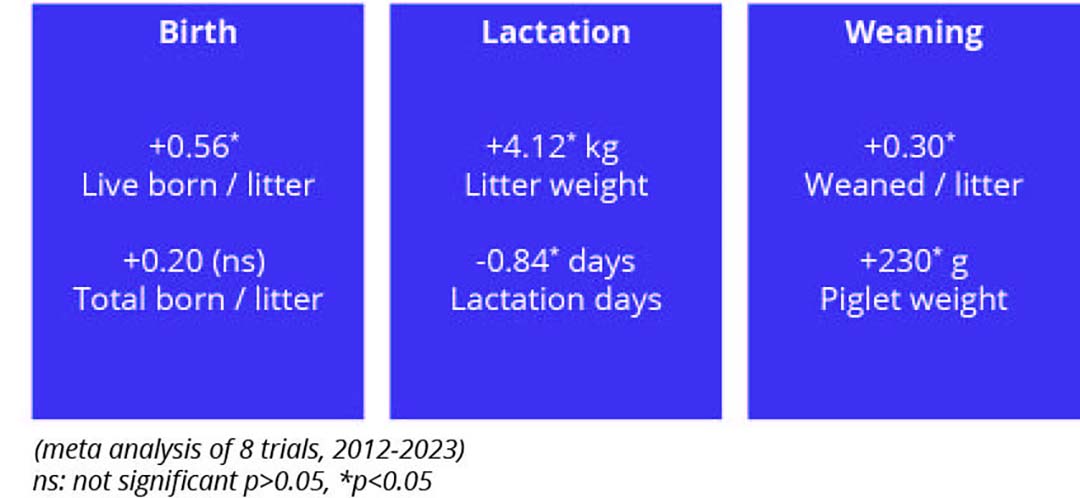
Thriving litters
Larger litters provide significant challenges for both the sow and the piglets. Live yeast supplementation applied to sows during the end of gestation and lactation supports a better sow metabolic and health state, a better developed microbiome and better colostrum and milk. All these benefits trickle down from the sow to her offspring, making the piglets prepared for a successful suckling, weaning and fattening period. Field trials show that this leads to more piglets at weaning, but also heavier piglets. Having the nutritional intervention of live yeast available is key to solve the challenges of today’s modern pig farming, including having more smaller and more vulnerable piglets. Live yeast in the sow’s diet can help to make all the piglets in each litter thrive and grow into robust and strong pigs, from birth to market.



